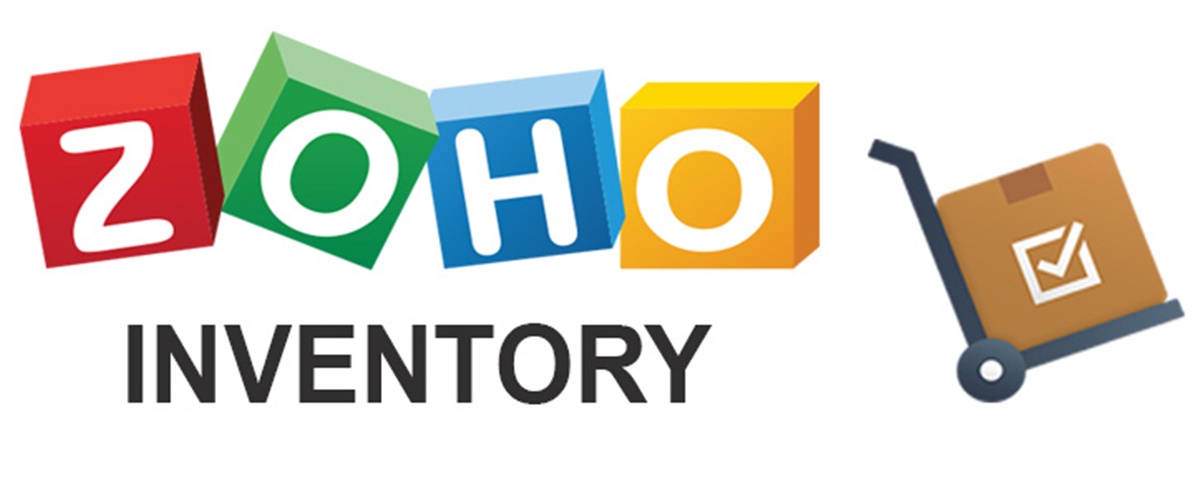Small Business Inventory Management: Best Practices & Strategies
It’s crucial to regularly evaluate your business to ensure that you are on the right track to success. One of the most significant parts of your business is inventory management.
How has the inventory management of your business thrived on? Have you had the right items available as you needed them? Did you fail in your business when products ran out of stock? Or did you lose money because of excess stock?
In this post, we’ll talk together about Small Business Inventory Management - Best Practices & Strategies.
What is inventory management for small businesses?

Inventory management is a part of supply chain management that ensures the right goods are in the correct number for sale, at the right time. When done efficiently, businesses decrease the costs of carrying excess inventory, whereas maximizing sales. With good inventory management, you can easily track your inventory in real-time to optimize the process.
Having your inventory managed effectively, you can have the right goods in the right number on hand and prevent items running out of stock and funds being tied up in excess stock. Besides, you can make sure your goods are sold in time to prevent spoilage or obsolescence, or invest too much money on stock that takes up space in a storehouse or stockroom.
Why is inventory management important for small businesses?

Customer service - Inventory management is vital to customer service since it enables you to avoid fault, such as letting customers order items out of stock. A good inventory management system will also allow you to keep track of production and backorders, so you can inform your customers of the time the product will be in stock. Backorders or orders are made while an item is not available for sales, are also helpful for tracking the demand, letting you enhance the availability of high-demand products.
Theft control - While not always a problem for small businesses, particularly those mainly on the web, theft control is crucial when you begin to hire employees or set up a physical store. Inventory management helps you see the number of items you have at any specific time, with the associated revenue generated from sales. It’s clear to see when something gets missing.
Financial management - Keeping track of the quantity of products you sell enhances your bookkeeping by automatically saving sales value as you sell an item, fees of acquiring stock, and depending on what you include in your inventory, shipping costs, gas, and restocking.
Supply and demand - Long term supply and demand data can let you know which items sell, which consumers want more of, and which you should give up.
Product tracking - Product tracking enables you to prioritize your inventory according to high sales products, and those that do not sell. This method you can advertise the products most likely to sell, rather than marketing those that don’t.
Small business inventory management: Best strategies & practices

Fine-tune your forecasting
Precise forecasting is essential. Your projected sales calculations should rely on factors like historical sales data, market trends, estimated growth and the economy, promotions, and more.
Use the FIFO approach (first in, first out)
Products should be sold in a similar chronological order as they were bought or manufactured. This is particularly significant for perishable goods, such as food, flowers, and makeup products. For instance, a bar owner needs to keep an eye on the materials behind the bar and apply the FIFO technique to enhance bar inventory. It’s also a great idea for nonperishable products because goods staying around for too long might be damaged or out of date and unsellable. The most appropriate way to use FIFO in a storehouse is to add new products from the back, so the older items stay at the front.
Identify low-turn stock
If you have stock that hasn’t been sold in the last six to twelve months, it’s about time to halt stocking that product. You might consider various strategies for removing that stock, such as a discount or promotion, because the excess stock would take up your space and capital.
Audit your stock
With a great inventory management system, you still have to count your inventory periodically to ensure what you have in stock coincides with what you think you have. Businesses apply various techniques, such as yearly, year-end physical inventory that counts every product and continually spot-checking, which can be beneficial for items that are moving fast or have stocking problems.
Use cloud-based inventory management software
It is necessary to find software with real-time sale analytics. Because Square’s software connects directly to your point of sale, your stock levels are automatically changed whenever you create a sale. Get daily stock alert emails, so you’re always aware of which products are low or run out of stock. Therefore, you can order more products timely.
Keep track of your stock levels at all times
It is essential to have a solid system for monitoring your stock levels, prioritizing the most pricey items. Efficient software takes much of the heavy lifting to save a lot of time, money, and effort.
Decrease equipment repair times
Necessary machinery is not always in working order, so it’s crucial to get those assets managed. A broken piece of machinery can be expensive. Tracking your machinery and its parts is important to recognize its life cycle, so you can prepare before problems occur.
Don’t forget quality control
No matter your specialty, it’s critical to make sure that all your goods have good appearances and good working conditions. You can have employees carry a quick exam during stock audits that consist of a checklist for signs of damage and precise item labeling. Hire a stock controller
Stock control is utilized to indicate the volume of inventory you have at a specific time and applies to all products from raw materials to completed goods. If you have a wide amount of inventory, you might need to hire a person who will take care of it. A stock controller’s responsibility is to handle all purchase orders, receive shipment, and ensure that everything is arriving matches what was ordered.
Remember your ABCs
Many businesses find it useful to have more rigid controls over higher-value products by classifying inventory items into A, B, and C categories.
Consider drop shipping
If your business applies drop-shipping techniques, you can sell goods without having the inventory yourself. A wholesaler or manufacturer takes responsibility for carrying the inventory and delivering the goods when customers purchases from your store. That method, there’s no need for you to worry about inventory holding, storage, or fulfillment. A lot of individuals who open an online store choose to use drop shipping methods. Still, this supply chain fulfillment strategy can be applied by different types of businesses throughout all industries.
Other inventory management tips for small businesses

Avoid shrinkage
There are four primary types of inventory shrinkage as a result of loss and theft. A 2014 study said that shoplifting took up 38% of retail shrinkage, and employee theft took up 34.5%, paperwork errors accounted for 16 percent, and supplier or seller fraud makes up 7%. Several experts have a fifth category that includes all unknown reasons for inventory loss; it accounts for 6% of all inventory shrinkage.
When products are damaged, they are also considered part of shrinkage. The damage may occur when en route to your shop or in the shop itself. Nevertheless, it happens, shrinkage is a very expensive issue for retailers and can lead to a loss of profit.
To compensate for these potential losses, you might boost your products’ prices, passing the cost to your consumers. But that can be counterproductive if consumers are price sensitive. Besides, you might need to enhance processes that stem theft and loss, such as security.
It is recommended that you should talk to your tax advisor to know whether you can reduce the casualty and theft losses associated with inventory on your personal or corporate tax return.
Tips for retailers
With good retail inventory management, you can save a lot of money. While it can be appealing to purchase merchandise in larger numbers to capitalize on vendor discounts and free delivery, having excess stock is not always good for the bottom line.
Excess stock can be an issue for some reasons. Firstly, you don’t want too big a portion of your business’s funds to spend on merchandise; you could risk losing money if you could not sell the goods timely. Moreover, there are expenses related to storing excess stock.
Besides, having too few of a product on hand can result in a loss of potential consumers. Let’s say consumers go to your physical store only to find that their favorite item runs out of stock. If you assume they’ll come back when the item is restocked, think again.
Tips for handmade sellers
A few businesses have their entire supply chain, such as a manufacturer and seller of handmade bags.
Instead of sourcing completed items from other sellers, your business sources raw material, which you then make into products to sell. Inventory of these types of businesses typically includes three categories:
- Raw materials used to make products
- Work-in-progress pieces
- Completed products
Best inventory management software for small businesses

inFlow Inventory

inFlow Inventory is suitable for all-sized businesses. Its free version is set up on-premise and allows you to manage up to 100 items and consumers. This version provides barcoding, count sheet functionalities, cost management, purchase orders, and sales orders.
Odoo
Odoo is a free solution if you only carry out the inventory management module. Odoo users will have to pay for other apps like CRM and project management.
Sortly Pro
Sortly Pro is a cloud-based inventory management solution for all-sized businesses. It provides a free plan to assist users and allows you to track up to 100 transaction entries per month. Sortly Pro’s USP is its product tagging and cataloging functions that enable users to build product catalogs with up to 8 images for each product.
ZhenHub

ZhenHub is a cloud-based logistics and inventory management solution for both small-and-mid sized businesses. Within its free version, ZhenHub provides inventory tracking, shipment tracking, and storeroom management. Besides, it also supports up to 50 online orders for one month. If you prefer managing more orders per month or managing more storerooms, you can go for the Starter, Standard, or Professional plans.
Zoho Inventory

Zoho Inventory is another cloud-based inventory and storehouse management solution for small-and-mid sized businesses. Within its free version, Zoho Inventory allows you to manage 20 online orders, 20 offline orders, 12 shipments, and 1 storehouse a month. Moreover, this version also enables you to choose and manage shipping suppliers for your orders.
Summary
We’ve provided you useful knowledge about Small Business Inventory Management. If you have the right inventory management system in place, you can focus on developing and marketing your business.
If you have anything related to inventory management to share with us, drop a line below in the comment section. Thank you for reading!
New Posts






